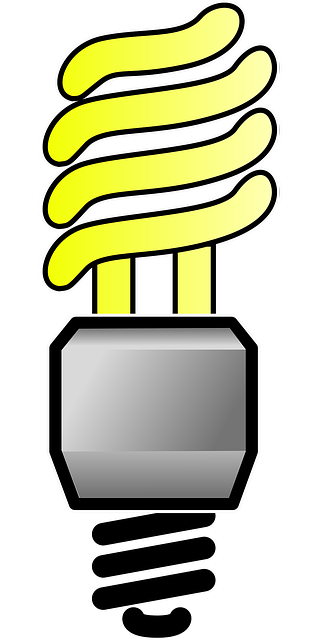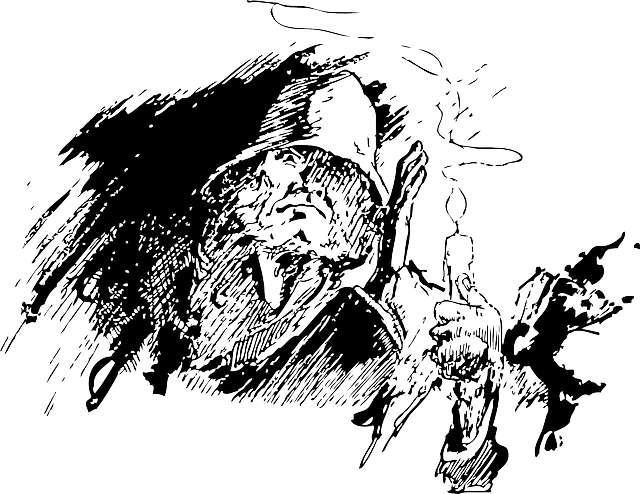هندسة إنشائية
| وليد خليفة |
| ساهم بشكل رئيسي في تحرير هذا الموضوع |
هندسة الإنشاءات Structural engineering هي مجال هندسي يتعامل مع تصميم المنشآت التي تدعم أوتقاوم الأحمال. وعادة ما تعتبر هندسة الإنشاءات تخصصاً داخل الهندسة المدنية, إلا أنه يمكن دراستها على حدة.
تاريخ الهندسة الإنشائية
انهيارات إنشائية شهيرة
| أنماط الانهيار الميكانيكي | |
|---|---|
| Buckling | |
| تآكل | |
| زحف | |
| كلل | |
| كسر | |
| Melting | |
| Rupture | |
| Thermal shock | |
| برى | |
| خضوع | |
Structural engineering has advanced significantly through the study of structural failures. The history of structural engineering contains many collapses and failures. Amongst the most significant are:
Dee Bridge
On 24 May, 1847 the Dee Bridge collapsed as a train passed over it, with the loss ofخمسة lives. It was designed by Robert Stephenson, using cast iron girders reinforced with wrought iron struts. The bridge collapse was subject to one of the first formal inquiries into a structural failure. The result of the enquiry was that the design of the structure was fundamentally flawed, as the wrought iron did not reinforce the cast iron at all, and due to repeated flexing it suffered a brittle failure due to fatigue.
First Tay Rail Bridge
The Dee bridge disaster was followed by a number of cast iron bridge collapses, including the collapse of the first Tay Rail Bridge on 28 December 1879. Like the Dee bridge, the Tay collapsed when a train passed over it causing 75 people to lose their lives. The bridge failed because of poorly made cast iron, and the failure of the designer Thomas Bouch to consider wind loading on the bridge. The collapse resulted in cast iron largely being replaced by steel construction, and a complete redesign in 1890 of the Forth Railway Bridge. As a result, the Forth Bridge was the first entirely steel bridge in the world.
First Tacoma Narrows Bridge
In 1940 the first Tacoma Narrows Bridge collapsed spectacularly due to wind induced resonant vibration with positive feedback (causing continually increasing amplitude). This collapse, and the research that followed, led to increased understanding of wind/structure interactions, including the phenomenon of flutter, a torsional mode of vibration. Several bridges were altered following the collapse to prevent a similar event occurring again. The only fatality was 'Tubby' the dog.
de Havilland Comet
During 1954 two de Havilland Comet C1 jet airliners, the world's first commercial airliner, crashed with the loss of all on board. After lengthy investigations, and the grounding of all Comet airliners, the cause was discovered to be metal fatigue at the corners of the windows. The square corners had led to stress concentrations which after continual stress cycles from pressurisation and de-pressurisation, failed catastropically in flight. The research into the failures led to significant improvements in understanding of fatigue loading of airframes, and the redesign of the Comet and all subsequent airliners to incorporate rounded corners to doors and windows.
Ronan Point
On 16 May, 1968 the 22 storey residential tower Ronan Point in the لندن borough of Newham collapsed when a relatively small gas explosion on the 18th floor caused a structural wall panel to be blown away from the building. The tower was constructed of precast concrete, and the failure of the single panel caused one entire corner of the building to collapse. The panel was able to be blown out because there was insufficient reinforcement steel passing between the panels. This also meant that the loads carried by the panel could not be redistributed to other adjacent panels, because there was no route for the forces to follow. As a result of the collapse, building regulations were overhauled to prevent disproportionate collapse, and the understanding of precast concrete detailing was greatly advanced. Many similar buildings were altered or demolished as a result of the collapse.
Hyatt Regency walkway
On 17 July, 1981, two suspended walkways through the lobby of the Hyatt Regency in Kansas City, Missouri, collapsed, killing 114 people at a tea dance. The collapse was due to a late change in design, altering the method in which the rods supporting the walkways were connected to them, and inadvertently doubling the forces on the connection. The failure highlighted the need for good communication between design engineers and contractors, and rigorous checks on designs and especially on contractor proposed design changes. The failure is a standard case study on engineering courses around the world, and is used to teach the importance of ethics in engineering.
Oklahoma bombing
On 19 April, 1995, the nine storey concrete framed Alfred P. Murrah Federal Building in Oklahoma was struck by a huge car bomb causing partial collapse, resulting in the deaths of 168 people. The bomb, though large, caused a significantly disproportionate collapse of the structure. The bomb blew all the glass off the front of the building and completely shattered a ground floor reinforced concrete column (see brisance). At second storey level a wider column spacing existed, and loads from upper storey columns were transferred into fewer columns below by girders at second floor level. The removal of one of the lower storey columns caused neighbouring columns to fail due to the extra load, eventually leading to the complete collapse of the central portion of the building. The bombing was one of the first to highlight the extreme forces that blast loading from terrorism can exert on buildings, and led to increased consideration of terrorism in structural design of buildings.
9/11
On 11 September, 2001, the two towers of the World Trade Center in نيويورك were struck by airplanes. Though the towers initially withstood the impact, the jet fuel on board caused fires which ultimately caused the buildings to collapse due to buckling failures in the perimeter gravity frame. Both towers collapsed in their entirety because as each floor collapsed, it fell on the floor below and caused it too to collapse. This mode of collapse is known as progressive collapse. The significant investigations into the collapse led to changes in the way tall buildings are designed to withstand both fire and terrorism, and the methods in which people escape in emergencies.
المجالات
منشآت البناء
Structural building engineering includes all structural engineering related to the design of buildings. It is the branch of structural engineering that is close to architecture.
Structural engineering specialties for buildings include:
- Earthquake engineering
- Façade engineering
- Fire engineering
- Roof engineering
- Tower engineering
- Wind engineering
منشآت الهندسة المدنية
Civil structural engineering includes all structural engineering related to the built environment, excluding occupiable buildings. It includes:
|
|
The structural engineer is the lead designer on these structures, and often the sole designer. In the design of structures such as these, structural safety is of paramount importance (in the UK, designs for dams, nuclear power stations and bridges must be signed off by a chartered engineer).
Civil engineering structures are often subjected to very extreme forces, such as large variations in temperature, dynamic loads such as waves or traffic, or high pressures from water or compressed gases. They are also often constructed in corrosive environments, such as at sea, in industrial facilities or below ground.
المنشآت الميكانيكية
The design of static structures assumes they always have the same geometry (in fact, so-called static structures can move significantly, and structural engineering design must take this into account where necessary), but the design of moveable or moving structures must account for fatigue, variation in the method in which load is resisted and significant deflections of structures.
These works can require mechanical structural engineering:
- Airframes and fuselages
- Boilers and pressure vessels
- Coachworks and carriages
- Cranes
- مصعدأالمصاعد
- Escalators
- Marine vessels and hulls
العناصر الإنشائية
Any structure is essentially made up of only a small number of different types of elements:
- الأعمدة
- Beams
- Plates
- Arches
- Shells
- Catenaries
Many of these elements can be classified according to form (straight,plane / curve) and dimensionality (one-dimensional / two-dimensional):
| One-dimensional | Two-dimensional | |||
|---|---|---|---|---|
| مستقيم | منحنى | مستوى | منحنى | |
| (predominantly) bending | beam | continous arch | plate, concrete slab | lamina, dome |
| (predominant) tensile stress | rope | Catenary | shell | |
| (predominant) compression | pier, column | Load-bearing wall | ||
الأعمدة
Columns are elements that carry only axial force - either tension or compression - or both axial force and bending. The design of a column must check the axial capacity of the element, and the buckling capacity.
The buckling capacity is the capacity of the element to withstand the propensity to buckle because of inaccuracies in straightness or position of the column. Its capacity depends upon its geometry, material and the effective length of the column, which depends upon the restraint conditions at the top and bottom of the column. This is shown in the table on the right, where the effective length is where is the real length of the column.
The capacity of a column to carry axial load depends on the degree of bending it is subjected to, and vice versa. This is represented on an interaction chart and is a complex non-linear relationship. [[عنوان وصلةنص عريض
==
نص عنوان رئيسي
Block quote
==
]]
Beams
A beam may be:
- cantilevered (supported at one end only with a fixed connection)
- simply supported (supported vertically but able to rotate at the supports)
- continuous (supported vertically and unable to rotate at the supports)
Beams are elements which carry pure bending only. Bending causes one section of a beam (divided along its length) to go into compression and the other section into tension. The compression section must be designed to resist buckling and crushing, while the tension section must be able to adequately resist the tension.
Trusses
1. Keystone 2. Voussoir 3. Extrados 4. Impost 5. Intrados 6. Rise 7. Clear span 8. Abutment
A truss is a lightweight version of a beam, which allows the required strength and stiffness to be achieved with a smaller amount of material than a solid beam. A truss consists of top and bottom members which carry tension or compression, with linking 'lacers' which transfer the forces to these members and restrain them, ensuring the truss acts as a single structural element. In a pin-jointed truss (where all joints are essentially hinges), the individual elements of a truss carry only axial load. From experiments it can be shown that even trusses with rigid joints will behave as though the joints are pinned.
Trusses are usually utilised to span large distances, where it would be uneconomical and unattractive to use solid beams.
Plates
Plates carry bending in two directions. A concrete flat slab is an example of a plate. Plates are understood by using continuum mechanics, but due to the complexity involved they are most often designed using a codified empirical approach, or computer analysis.
They can also be designed with yield line theory, where an assumed collapse mechanism is analysed to give an upper bound on the collapse load (see Plasticity). This is rarely used in practice.
Shells
Shells derive their strength from their form, and carry forces in compression in two directions. A dome is an example of a shell. They can be designed by making a hanging-chain model, which will act as a catenary in pure tension, and inverting the form to achieve pure compression.
Arches
Arches carry forces in compression in one direction only, which is why it is appropriate to build arches out of masonry. They are designed by ensuring that the line of thrust of the force remains within the depth of the arch.
Catenaries
Catenaries derive their strength from their form, and carry transverse forces in pure tension by deflecting (just as a tightrope will sag when someone walks on it). They are almost always cable or fabric structures. A fabric structure acts as a catenary in two directions.
نظرية هندسة الإنشاءات
Structural engineering depends upon a detailed knowledge of loads, physics and materials to understand and predict how structures support and resist self-weight and imposed loads. To apply the knowledge successfully a structural engineer will need a detailed knowledge of mathematics and of relevant empirical and theoretical design codes.
Loads imposed on structures are supported by means of forces transmitted through structural elements. These forces can manifest themselves as:
- tension (قوة محورية)
- compression (قوة محورية)
- shear
- bending, or flexure (a bending moment is a force multiplied by a distance, or lever arm, hence producing a turning effect or torque)
الأحمال
Structural loads on structures are generally classified as live (imposed) loads and dead loads.
Live loads are transitory or temporary loads, and are relatively unpredictable in magnitude. They may include the weight of a building's occupants and furniture, the forces/weights of wind and water, temperature, vibration, seismic activity, blast loading, fire loading and temporary loads the structure is subjected to during construction.
Dead loads are permanent, and may include the weight of the structure itself and all major permanent components. Dead load may also include the weight of the structure itself supported in a way it wouldn't normally be supported, for example during construction.
القوة
Strength depends upon material properties. The strength of a material depends on its capacity to withstand axial stress or shear stress. The strength of a material is measured in force per unit area (newtons per square millimetre or N/mm², or the equivalent megapascals or MPa).
A structure fails the strength criterion when the stress (force divided by area of material) induced by the loading is greater than the capacity of the structural material to resist the load without breaking, or when the strain (percentage extension) is so great that the element no longer fulfils its function (yield).
انظر أيضاً:
Stiffness
Stiffness depends upon material properties and geometry. The stiffness of a structural element of a given material is the product of the material's Young's modulus and the element's second moment of area. Stiffness is measured in force per unit length (newtons per millimetre or N/mm), and is equivalent to the 'force constant' in Hooke's Law.
The deflection of a structure under loading is dependent on its stiffness. The dynamic response of a structure to dynamic loads (the natural frequency of a structure) is also dependent on its stiffness.
In a structure made up of multiple structural elements, the elements will carry loads in proportion to their relative stiffness - the stiffer an element, the more load it will attract.
A structure is considered to fail the chosen serviceability criteria if it is insufficiently stiff to have acceptably small deflection or dynamic response under loading.
The inverse of stiffness is the flexibility.
عوامل الأمان
The safe design of structures requires a design approach which takes account of the statistical likelihood of the failure of the structure. Structural design codes are based upon the assumption that both the loads and the material strengths vary with a normal distribution.
The job of the structural engineer is to ensure that the chance of overlap between the distribution of loads on a structure and the distribution of material strength of a structure is acceptably small (it is impossible to reduce that chance to zero).
Load cases
A load case is a combination of different types loads with safety factors applied to them. A structure is checked for strength and serviceability against all the load cases it is likely to experience during its lifetime.
Typical load cases for design for strength (ultimate load cases; ULS) are:
- 1.4 x Dead Load + 1.6 x Live Load
- 1.2 x Dead Load + 1.2 x Live Load + 1.2 x Wind Load
A typical load case for design for serviceability (characteristic load cases; SLS) is:
- 1.0 x Dead Load + 1.0 x Live Load
Different load cases would be used for different loading conditions. For example, in the case of design for fire a load case of 1.0 x Dead Load + 0.8 x Live Load may be used, as it is reasonable to assume everyone has left the building if there is a fire.
In multi-storey buildings it is normal to reduce the total live load depending on the number of storeys being supported, as the probability of maximum load being applied to all floors simultaneously is negligibly small.
It is not uncommon for large buildings to require hundreds of different load cases to be considered in the design.
قوانين الحركة لنيوتن
The most important natural laws for structural engineering are Newton's Laws of Motion
Newton's first law states that every body perseveres in its state of being at rest or of moving uniformly straight forward, except insofar as it is compelled to change its state by force impressed.
Newton's second law states that the rate of change of momentum of a body is proportional to the resultant force acting on the body and is in the same direction. Mathematically, F=ma (force = mass x acceleration).
Newton's third law states that all forces occur in pairs, and these two forces are equal in magnitude and opposite in direction.
With these laws it is possible to understand the forces on a structure and how that structure will resist them. The Third Law requires that for a structure to be stable all the internal and external forces must be in equilibrium. This means that the sum of all internal and external forces on a free-body diagram must be zero:
- Σ H = 0: the sum of the horizontal components of the forces equals zero;
- Σ V = 0: the sum of the vertical components of forces equals zero;
Statical determinacy
A structural engineer must understand the internal and external forces of a structural system consisting of structural elements and nodes at their intersections.
A statically determinate structure can be fully analysed using only consideration of equilibrium, from Newton's Laws of Motion.
A statically indeterminate structure has more unknowns than equilibrium considerations can supply equations for (see simultaneous equations). Such a system can be solved using consideration of equations of compatibility between geometry and deflections in addition to equilibrium equations, or by using virtual work.
If a system is made up of bars, pin joints and support reactions, then it cannot be statically determinate if the following relationship does not hold:
It should be noted that even if this relationship does hold, a structure can be arranged in such a way as to be statically indeterminate.
المرونة
Much engineering design is based on the assumption that materials behave elastically. For most materials this assumption is incorrect, but empirical evidence has shown that design using this assumption can be safe. Materials that are elastic obey Hooke's Law, and plasticity does not occur.
For systems that obey Hooke's Law, the extension produced is directly proportional to the load:
where
- x is the distance that the spring has been stretched or compressed away from the equilibrium position, which is the position where the spring would naturally come to rest [usually in meters],
- F is the restoring force exerted by the material [usually in newtons], and
- k is the force constant (or spring constant). This is the stiffness of the spring. The constant has units of force per unit length (usually in newtons per metre)
اللدونة
Some design is based on the assumption that materials will behave plastically. A plastic material is one which does not obey Hooke's Law, and therefore deformation is not proportional to the applied load. Plastic materials are ductile materials. Plasticity theory can be used for some reinforced concrete structures assuming they are underreinforced, meaning that the steel reinforcement fails before the concrete does.
Plasticity theory states that the point at which a structure collapses (reaches yield) lies between an upper and a lower bound on the load, defined as follows:
- دائرة مور
- Von Mises yield criterion
- Henri Tresca
معادلة اويلر-برنولي للكمرة
The Euler-Bernoulli beam equation defines the behaviour of a beam element (see below). It is based on five assumptions:
(1) continuum mechanics is valid for a bending beam
(2) the stress at a cross section varies linearly in the direction of bending, and is zero at the centroid of every cross section.
(3) the bending moment at a particular cross section varies linearly with the second derivative of the deflected shape at that location.
(4) the beam is composed of an isotropic material
(5) the applied load is orthogonal to the beam's neutral axis and acts in a unique plane.
A simplified version of Euler-Bernoulli beam equation is:
Here
This equation is very common in engineering practice: it describes the deflection of a uniform, static beam.
Successive derivatives of u have important meaning:
- is the deflection.
- is the slope of the beam.
A bending moment manifests itself as a tension and a compression force, acting as a couple in a beam. The stresses caused by these forces can be represented by:
where
Buckling
When subjected to compressive forces it is possible for structural elements to deform significantly due to the destabilising effect of that load. The effect can be initiated or exacerbated by possible inaccuracies in manufacture or construction.
The Euler buckling formula defines the axial compression force which will cause a strut (or column) to fail in buckling.
where
- = unsupported length of column,
-
= column effective length factor, whose value depends on the conditions of end support of the column, as follows.
- For both ends pinned (hinged, free to rotate), = 1.0.
- For both ends fixed, = 0.50.
- For one end fixed and the other end pinned, = 0.70.
- For one end fixed and the other end free to move laterally, = 2.0.
This value is sometimes expressed for design purposes as a critical buckling stress.
where
Other forms of buckling include lateral torsional buckling, where the compression flange of a beam in bending will buckle, and buckling of plate elements in plate girders due to compression in the plane of the plate.
المواد
1. Ultimate strength
2. Yield strength-corresponds to yield point.
3. Rupture
4. Strain hardening region
5. Necking region.
Structural engineering depends on the knowledge of materials and their properties, in order to understand how different materials support and resist loads.
Common structural materials are:
الحديد
الحديد المطاوع
Wrought iron is the simplest form of iron, and is almost pure iron (typically less than 0.15% carbon). It usually contains some slag. Its uses are almost entirely obsolete, and it is no longer commercially produced.
Wrought iron is very poor in fires. It is ductile, malleable and tough. It does not corrode as easily as steel.
الحديد الزهر
Cast iron is a brittle form of iron which is weaker in tension than in compression. It has a relatively low melting point, good fluidity, castability, excellent machinability and wear resistance. Though almost entirely replaced by steel in building structures, cast irons have become an engineering material with a wide range of applications, including pipes, machine and car parts.
Cast iron retains high strength in fires, despite its low melting point. It is usually around 95% iron, with between 2.1-4% carbon and between 1-3% silicon. It does not corrode as easily as steel.
الصلب
Steel is a iron alloy with between 0.2 and 1.7% carbon.
Steel is used extremely widely in all types of structures, due to its relatively low cost, high strength to weight ratio and speed of construction.
Steel is a ductile material, which will behave elastically until it reaches yield (point 2 on the stress-strain curve), when it becomes plastic and will fail in a ductile manner (large strains, or extensions, before failure at point ثلاثة on the curve). Steel is equally strong in tension and compression.
Steel is very weak in fires, and must be protected in most buildings. Because of its high strength to weight ratio, steel buildings typically have low thermal mass, and require more energy to heat (or cool) than similar concrete buildings.
The elastic modulus of steel is approximately 205 GPa
Steel is very prone to corrosion (rust).
الصلب غير القابل للصدأ
Stainless steel is an iron-carbon alloy with a minimum of 10.5% chromium content. There are different types of stainless steel, containing different proportions of iron, carbon, molybdenum, nickel. It has similar structural properties to steel, although its strength varies significantly.
It is rarely used for primary structure, and more for architectural finishes and building cladding.
It is highly resistant to corrosion and staining.
الخرسانة
Concrete is used extremely widely in building and civil engineering structures, due to its low cost, flexibility, durability and high strength. It also has high resistance to fire.
Concrete is brittle material, which is very strong in compression and very weak in tension. It behaves non-linearly at all times. Because it has essentially zero strength in tension, it is almost always used as reinforced concrete, a composite material. It is a mixture of sand, aggregate, cement and water. It is placed in a mould, or form, as a liquid, and then it sets (goes off), due to a chemical reaction between the water and cement. The reaction produces a significant amount of heat.
Concrete increases in strength continually from the day it is cast. It shrinks over time as it dries out, and deforms over time due to a phenomenon called creep. Its strength depends highly on how it is mixed, poured, cast, compacted and cured (kept wet while setting). It can be cast into any shape that a form can be made for. Its colour, quality and finish depend upon the complexity of the structure, the material used for the form and the skill of the pourer.
Concrete is a non-linear, non-elastic material, and will fail suddenly, with a brittle failure, unless adequate reinforced with steel. An "under-reinforced" concrete element will fail with a ductile manner, as the steel will fail before the concrete. An "over-reinforced" element will fail suddenly, as the concrete will fail first. Reinforced concrete elements should be designed to be under-reinforced so users of the structure will receive warning of impending collapse.
The elastic modulus of concrete can vary widely and depends on the concrete mix, age and quality, as well as the on the type and duration of loading applied to it. It is usually taken as approximately 25 GPa for long-term loads once it has attained its full strength (usually considered to be at 28 days after casting). It is taken as approximately 38 GPa for very short-term loading, such as footfalls.
Concrete has very favourable properties in fire - it is not adversely affected by fire until it reaches very high temperatures. It also has very high mass, so it is good for providing sound insulation and heat retention (leading to lower energy requirements for the heating of concrete buildings). This is offset by the fact that producing and transporting concrete is very energy intensive.
الألومنيوم
1. Ultimate strength
2. Yield strength
3. Proportional Limit Stress
4. Rupture
5. Offset strain (typically 0.002).
Aluminium is a soft, lightweight, malleable metal. The yield strength of pure aluminium is 7–11 MPa, while aluminium alloys have yield strengths ranging from 200 MPa to 600 MPa. Aluminium has about one-third the density and stiffness of steel. It is ductile, and easily machined, cast, and extruded.
Corrosion resistance is excellent due to a thin surface layer of aluminium oxide that forms when the metal is exposed to air, effectively preventing further oxidation. The strongest aluminium alloys are less corrosion resistant due to galvanic reactions with alloyed copper.
Aluminium is used in some building structures (mainly in facades) and very widely in aircraft engineering because of its good strength to weight ratio. It is a relatively expensive material.
In aircraft it is gradually being replaced by carbon composite materials.
المواد المركبة
Composite materials are used increasingly in vehicles and aircraft structures, and to some extent in other structures. They are increasingly used in bridges, especially for conservation of old structures such as Coalport cast iron bridge built in 1818. Composites are often anisotropic (they have different material properties in different directions) as they can be laminar materials. They most often behave non-linearly and will fail in a brittle manner when overloaded.
They provide extremely good strength to weight ratios, but are also very expensive. The manufacturing processes, which are often extrusion, do not currently provide the economical flexibility that concrete or steel provide. The most commonly used in structural applications are glass-reinforced plastics.
الحجر
Masonry has been used in structures for hundreds of years, and can take the form of stone, brick or blockwork. Masonry is very strong in compression but cannot carry tension (because the mortar between bricks or blocks is unable to carry tension). Because it cannot carry tension, it also cannot carry bending, so masonry walls become unstable at relatively small heights. High masonry structures require stabilisation against lateral loads from buttresses (as with the flying buttresses seen in many European medieval churches) or from windposts.
Historically masonry was constructed with no mortar or with lime mortar. In modern times cement based mortars are used.
Since the widespread use of concrete, stone is rarely used as a primary structural material, often only appearing as a cladding, because of its cost and the high skills needed to produce it. Brick and concrete blockwork have taken its place.
Masonry, like concrete, has good sound insulation properties and high thermal mass, but is generally less energy intensive to produce. It is just as energy intensive as concrete to transport.
الخشب
Timber is the oldest of structural materials, and though mainly supplanted by steel, masonry and concrete, it is still used in a significant number of buildings. The properties of timber are non-linear and very variable, depending on the quality, treatment of wood and type of wood supplied. The design of wooden structures is based almost entirely on empirical evidence.
Wood is strong in tension and compression, but can be weak in bending due to its fibrous structure. Wood is relatively good in fire as it chars, which provides the wood in the centre of the element with some protection and allows the structure to retain some strength for a reasonable length of time.
مواد إنشائية أخرى
- Adobe
- Bamboo
- Mud bricks
- Roofing materials
انظر أيضاً
- Architects
- Architectural engineering
- Civil engineering
- Forensic engineering
- List of structural engineers
- Mechanical engineering
- Structural engineer
- Structural failure
المراجع
- Blank, Alan; McEvoy, Michael; Plank, Roger (1993). Architecture and Construction in Steel. Taylor & Francis. ISBN 0419176608.
- Bradley, Robert E.; Sandifer, Charles Edward (2007). Leonhard Euler: Life, Work and Legacy. Elsevier. ISBN 0444527281.
- Castigliano, Carlo Alberto (translator: Andrews, Ewart S.) (1966). . Dover Publications.
- Chapman, Allan. (2005). England's Leornardo: Robert Hooke and the Seventeenth Century's Scientific Revolution. CRC Press. ISBN 0750309873.
- Dym, Clive L. (1997). Structural Modeling and Analysis. Cambridge University Press. ISBN 0521495369.
- Dugas, René (1988). A History of Mechanics. Courier Dover Publications. ISBN 0486656322.
- Feld, Jacob; Carper, Kenneth L. (1997). Construction Failure. John Wiley & Sons. ISBN 0471574775.
- Galilei, Galileo. (translators: Crew, Henry; de Salvio, Alfonso) (1954). Dialogues Concerning Two New Sciences. Courier Dover Publications. ISBN 0486600998
- Hewson, Nigel R. (2003). Prestressed Concrete Bridges: Design and Construction. Thomas Telford. ISBN 0727727745.
- Heyman, Jacques (1998). Structural Analysis: A Historical Approach. Cambridge University Press. ISBN 0521622492.
- Heyman, Jacques (1999). The Science of Structural Engineering. Imperial College Press. ISBN 1860941893.
- Hognestad, E. A Study of Combined Bending and Axial Load in Reinforced Concrete Members. University of Illinois, Engineering Experiment Station, Bulletin Series N. 399.
- Hosford, William F. (2005). Mechanical Behavior of Materials. Cambridge University Press. ISBN 0521846706.
- Hoogenboom, P.C.J. . Historical Overview of Concrete Modelling.
- Kirby, Richard Shelton (1990). Engineering in History. Courier Dover Publications. ISBN 0486264122.
- Labrum, E.A. (1994). Civil Engineering Heritage. Thomas Telford. ISBN 072771970X.
- Leonhardt, A. (1964). Vom Caementum zum Spannbeton, Band III (From Cement to Prestressed Concrete). Bauverlag GmbH.
- MacNeal, Richard H. (1994). Finite Elements: Their Design and Performance. Marcel Dekker. ISBN 0824791622.
- Mir, Ali (2001). Art of the Skyscraper: the Genius of Fazlur Khan. Rizzoli International Publications. ISBN 0847823709.
- Mörsch, E. (Stuttgart, 1908). Der Eisenbetonbau, seine Theorie und Anwendun, (Reinforced Concrete Construction, its Theory and Application). Konrad Wittwer, 3th edition.
- Nedwell,P.J.; Swamy,R.N.(ed) (1994). Ferrocement:Proceedings of the Fifth International Symposium. Taylor & Francis. ISBN 0419197001.
- Newton, Isaac; Leseur, Thomas; Jacquier, François (1822). . Oxford University.
- Nilson, Arthur H.; Darwin, David; Dolan, Charles W. (2004). Design of Concrete Structures. McGraw-Hill Professional. ISBN 0072483059.
- Petroski, Henry (1994). Design Paradigms: Case Histories of Error and Judgment in Engineering. Cambridge University Press. ISBN 0521466490.
- Prentice, John E. (1990). Geology of Construction Materials. Springer. ISBN 041229740X.
- Rozhanskaya, Mariam; Levinova, I. S. (1996). "Statics" in Morelon, Régis & Rashed, Roshdi (1996). Encyclopedia of the History of Arabic Science, vol. 2-3, Routledge. ISBN 0415020638
- Schlaich, J., K. Schäfer, M. Jennewein (1987). "Toward a Consistent Design of Structural Concrete". PCI Journal, Special Report, Vol. 32, No. 3.
- Scott, Richard (2001). In the Wake of Tacoma: Suspension Bridges and the Quest for Aerodynamic Stabilitya. ASCE Publications. ISBN 0784405425.
- Swank, James Moore (1965). History of the Manufacture of Iron in All Ages. Ayer Publishing. ISBN 0833734636.
- Turner, J.; Clough, R.W.; Martin, H.C.; Topp, L.J. (1956). "Stiffness and Deflection of Complex Structures". Journal of Aeronautical Science Issue 23.
- Virdi, K.S. (2000). Abnormal Loading on Structures: Experimental and Numerical Modelling. Taylor & Francis. ISBN 0419259600.
- Whitbeck, Caroline (1998). Ethics in Engineering Practice and Research. Cambridge University Press. ISBN 0521479444.
هامش
See above for references to publications and academic papers.
- ^ "History of Structural Engineering". University of San Diego. Retrieved 2007-12-02.
- ^ Petroski, H. (1994) p.81
- ^ Scott, Richard (2001). In the Wake of Tacoma: Suspension Bridges and the Quest for Aerodynamic Stabilitya. ASCE Publications. p. p.139. ISBN .CS1 maint: extra text (link)
خطأ استشهاد: وسم
<ref>غير صالح؛ الاسم "Tacoma" معهد أكثر من مرة بمحتويات مختلفة. - ^ Feld, Jacob; Carper, Kenneth L. (1997). Construction Failure. John Wiley & Sons. p. p.8. ISBN .CS1 maint: multiple names: authors list (link) CS1 maint: extra text (link)
- ^ Feld, J.; Carper, K.L. (1997) p.214
- ^ Whitbeck, C. (1998) p.115
- ^ Virdi, K.S. (2000). Abnormal Loading on Structures: Experimental and Numerical Modelling. Taylor & Francis. p. p.108. ISBN .CS1 maint: extra text (link)
- ^ Dym, Clive L. (1997). Structural Modeling and Analysis. Cambridge University Press. p. p.98. ISBN .CS1 maint: extra text (link)
- ^ Heyman, Jacques (1998). Structural Analysis: A Historical Approach. Cambridge University Press. ISBN .
وصلات خارجية
- Institution of Structural Engineers (IStructE)
- Structural Engineering Association - International
- National Council of Structural Engineers Associations
- Structural Engineering Institute






























